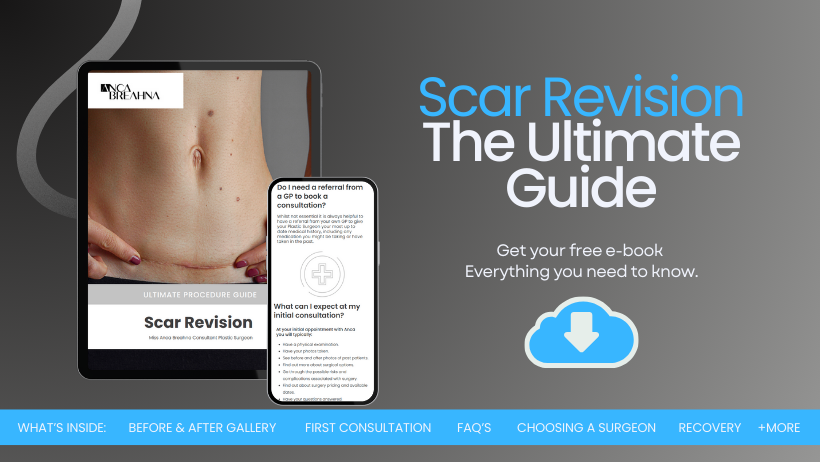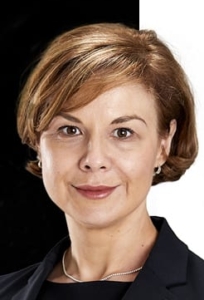
A Guide to Reducing Old Scars
Scar removal surgery offers a promising solution for those looking to reduce the visibility of old scars. This procedure isn’t about erasing every trace of injury but rather improving the appearance of scars so they blend more seamlessly with the surrounding skin. The decision to opt for surgical intervention should be made after careful consideration of the type of scar you have, your overall skin health and your expectations from the procedure.
When exploring surgical options, it’s important to understand that the timing, technique, and outcome can vary widely depending on the individual case. Scar removal surgeries are tailored to address specific concerns—whether that’s flattening a raised one, reducing the width of a scar, or altering its position for less visibility.
Before considering surgery, you might have tried other treatments with limited success. Surgery presents a more definitive approach, yet it’s not without its challenges. It requires a significant commitment to post-operative care and a realistic understanding of what the surgery can achieve.
In this blog, Chester Consultant Plastic Surgeon Anca Breahna shares her expert insights regarding scar treatment, drawing upon years of experience in the field of plastic and reconstructive surgery.
Take our Plastic Surgery Quiz to find out if you’d be a good candidate for cosmetic surgery.
Understanding Scars before Surgery
Scars tell the story of your skin’s response to injury, whether from accidents, surgeries, or conditions like acne. Recognising the type of scar you have is key to determining the most effective surgical approach.
Scars can be broadly categorised into keloid, hypertrophic, atrophic, and contracture types, each with distinct characteristics. Keloid formation are raised, extending beyond the original injury site, often requiring specific surgical techniques to address their growth. Hypertrophic tissue changes, while also raised, stay within the injury boundaries and may become less noticeable over time. Atrophic indentations leave a depression in the skin and are commonly associated with acne or chickenpox. Contracture scars, resulting from burns, can affect muscles and tendons, limiting movement.
A pre-surgical evaluation with Anca will involve examining the scar’s size, texture, and depth, as well as considering the skin’s overall quality and the impact on surrounding tissues. This evaluation is important for tailoring the surgical plan to your specific needs, aiming to improve the scar’s appearance while maintaining the skin’s function and reducing any discomfort.
Understanding that scar removal surgery might not completely eliminate the scar is important. The goal is to improve its appearance to the point where it’s less noticeable and more in harmony with the surrounding skin. This might involve making the scar flatter, lighter, or simply less conspicuous.
During your consultation, Anca also assess your skin’s healing capacity, which can affect the outcome of the surgery. Factors such as age, skin colour, and lifestyle can influence how well your skin heals and adapts post-surgery. A thorough understanding of these factors allows for a more accurate prediction of the surgical outcomes.
Download Miss Anca Breahna’s Scar Revision Guide

Scar Revision Surgery to Get Rid of Old Scars
Scar revision involves modifying or reducing the scar tissue, using various surgical techniques based on the scar’s characteristics and location. The primary goal is to create a less noticeable scar, either by altering its position, reducing its size, or improving its texture.
Techniques in Scar Revision Surgery
Several techniques are available for scar revision and the choice depends on the specific needs of your scar:
- Excision: The most direct approach, where the scar tissue is surgically removed, and the skin edges are carefully rejoined. This method is often used for wide or long scars.
- W-Plasty and Z-Plasty: These techniques involve making zigzag cuts on either side of the scar, rearranging the tissue to break up the straight line of the scar, which helps it blend more naturally with the skin’s texture.
- Laser Resurfacing: While not a traditional cut-and-suture surgery, laser resurfacing can be used in conjunction with other techniques to smooth out the scar and reduce redness.
Recovery and Aftercare
The recovery period for scar revision surgery varies depending on the extent of the procedure and your healing process. Generally, you can expect some swelling, discomfort, and redness in the area, which usually subsides within a few weeks. It’s important to follow Anca’s aftercare instructions closely to ensure proper healing. This may include avoiding certain activities that could strain the healing scar, applying prescribed topical treatments, and attending follow-up appointments to monitor your progress.
Laser Surgery for Scars
Laser surgery has become a prominent method for treating various types of scars, offering a less invasive alternative to traditional surgical techniques. By using focused light, this procedure can reduce the appearance of scars, improving skin texture and tone.
How Laser Surgery Works
Laser surgery utilises concentrated beams of light to remove or reshape scar tissue. Different types of lasers are used depending on the scar’s characteristics—some are designed to target the blood vessels in red scars, while others can remove the outer layer of skin or stimulate collagen production in the deeper layers. This process not only helps in blending the scar with the surrounding skin but also promotes healthier skin regeneration.
Types of Lasers Used in Scar Treatment
- Ablative Lasers: These lasers remove the top layer of skin, essentially “resurfacing” the area. They are particularly effective for scars that have caused changes in skin texture, such as pitted scars.
- Non-Ablative Lasers: These target the underlying skin tissue without removing the top layer, stimulating collagen growth and skin tightening. They require less downtime than ablative lasers and are suitable for various scar types.
- Fractional Lasers: A technology that targets a fraction of the skin at a time, creating micro-wounds that trigger the body’s healing process. This approach is effective for deep scars and offers a balance between efficacy and recovery time.
What to Expect: Procedure, Recovery, and Results
The laser surgery procedure usually involves a local anaesthetic to minimise discomfort, followed by the application of the laser to the targeted scar tissue. The duration of the treatment can vary from a few minutes to an hour, depending on the scar’s size and depth.
Recovery times also vary with the type of laser used. Ablative laser treatments might require a few weeks of downtime, with initial redness and swelling transitioning to gradual healing. Non-ablative and fractional lasers generally have a shorter recovery period, allowing you to return to your daily activities more quickly.
Cryosurgery for Scar Treatment
Cryosurgery represents an innovative approach to scar management, particularly effective for certain types of scars, such as keloid and hypertrophic scars. This technique uses extreme cold to selectively destroy abnormal scar tissue, encouraging the growth of new, healthier skin.
The Process of Cryosurgery
Cryosurgery involves the application of liquid nitrogen or argon gas to the scarred area, rapidly freezing the abnormal tissue. This sudden drop in temperature causes ice crystals to form within the cells, leading to cell death and subsequent reduction of the scar tissue. The procedure is typically quick, performed in Anca’s office, and can be adjusted in intensity depending on the scar’s characteristics and your skin type.
Pros and Cons of Cryosurgery for Scars
The advantages of cryosurgery include its minimal invasiveness, quick recovery times, and the ability to target specific areas without affecting the surrounding healthy skin. It’s especially beneficial for raised scars that have not responded to other treatments, as it can reduce their size and relieve symptoms like itchiness or discomfort.
However, cryosurgery is not without its drawbacks. The procedure can be uncomfortable, and there’s a risk of skin discolouration, particularly in darker skin tones. Additionally, multiple sessions may be necessary to achieve the desired outcome, and there’s always a risk of the scar not responding to the treatment as expected.
Recovery Process
Recovery from cryosurgery is generally straightforward, with minimal downtime required. You may experience redness, swelling, and blistering in the treated area, which typically subsides within a few days to weeks. It’s important to follow post-procedure care instructions carefully, which may include keeping the area clean and dry, applying prescribed ointments, and avoiding direct sunlight.
For best results, cryosurgery may be combined with other treatments, such as steroid injections or pressure therapy, particularly in the management of keloid scars. This combination approach can help to further reduce the scar’s appearance and prevent recurrence.
Skin Grafting
Skin grafting is a surgical procedure used to treat extensive or deep scars, especially those that result from burns, injuries, or surgeries. This method involves transplanting skin from one area of the body (the donor site) to the scarred area (the recipient site), helping to restore skin appearance and function.
There are two main types of skin grafts:
- Split-thickness grafts, which include the epidermis and a portion of the dermis. These grafts are used for covering large areas but may result in a thinner, less durable skin area.
- Full-thickness grafts, which involve the epidermis and the entire dermis. These provide a more durable and aesthetically pleasing result but are suitable for smaller areas due to the need for a more significant donor site.
The Procedure: From Donor Site to Transplant
The skin grafting procedure starts with the selection of the donor site, typically an area hidden by clothes, such as the inner thigh or buttock. Anca then carefully removes the skin from this area and transplants it to the scarred site, securing it in place with stitches or surgical glue.
The success of a skin graft largely depends on the body’s ability to integrate the transplanted skin into the surrounding tissue, a process that requires adequate blood supply. To promote healing, the treated area may be covered with a bandage or dressing that applies pressure and helps prevent movement.
Healing and Care Post-Skin Grafting
The recovery process involves caring for both the donor and recipient sites. You may experience pain, which can be managed with medications prescribed by Anca. Keeping the graft area immobile and elevated can also help reduce swelling and promote healing.
The donor site typically heals within two to three weeks, while the grafted area may take longer. It’s important to follow Anca’s aftercare instructions, which will include how to clean and dress the wounds, signs of potential complications to watch for, and when to return for follow-up appointments.
Postoperative care is essential for the success of the skin graft. This may involve using moisturisers to keep the skin supple, sun protection to prevent damage to the new skin, and in some cases, physical therapy to maintain flexibility in the affected area.
Tissue Expansion for Scar Removal
Tissue expansion represents a unique approach for scar management, particularly suited for treating large areas of scarring where direct closure is not feasible, or the best aesthetic results cannot be achieved with simple excision. This technique leverages the body’s natural ability to grow extra skin by stretching surrounding tissue:
- The Concept of Tissue Expansion The central principle behind tissue expansion is quite straightforward: by gradually stretching the skin, new skin cells are produced, increasing the amount of available tissue. This method is often used in reconstructive surgery, including for burn victims or individuals with large congenital moles or scars.
- Surgical Procedure and Recovery Tissue expansion involves the insertion of a balloon expander under the skin near the area of the scar. Over weeks or months, this expander is gradually filled with saline solution, slowly stretching the skin. Once enough extra skin has been generated, a second surgery is performed to remove the scar and the expander, and the newly grown skin is stretched over the now scar-free area.
The initial placement of the expander is usually done under general anaesthesia, and the patient can usually return home the same day. The expansion process is gradual, with saline injections occurring every few weeks, causing minimal discomfort. This phase requires careful monitoring to avoid over-expansion or damage to the surrounding tissue.
Recovery from the final surgery, where the scar is removed, and the area is reconstructed, might involve more downtime and care than the initial expander placement. The success of this process depends heavily on following Anca’s advice for wound care, activity restrictions, and follow-up visits.
Ideal Candidates for Tissue Expansion
Tissue expansion is most suited for patients with healthy surrounding skin that can be stretched and have the patience for the multi-step process. It’s particularly beneficial for areas where a large amount of skin is needed, and there is enough adjacent skin to facilitate expansion, such as the scalp or back.
Benefits and Considerations
One of the main benefits of tissue expansion is that the new skin, being from the same person, matches perfectly in colour and texture. However, the process requires time and patience, with the full treatment spanning several months. There is also the temporary inconvenience of living with the expander and attending regular appointments for saline injections.
Tissue expansion offers an innovative solution for scar removal, particularly for those with extensive scarring where other methods might not provide satisfactory results. By utilising the body’s natural growth responses, you can achieve significant improvements in the appearance and functionality of scarred areas.
Combining Surgical and Non-Surgical Treatments
In the journey to improve the appearance and functionality of scars, a holistic approach that combines both surgical and non-surgical treatments often yields the best results. This integrated strategy allows for a complex management plan that addresses the scar’s physical characteristics, your aesthetic goals, and any associated symptoms or limitations.
Combining treatments may be considered in several scenarios:
- Enhancing Results: Non-surgical treatments like laser therapy or microneedling can refine and enhance the outcomes of scar revision surgery, smoothing out the skin’s texture and improving its overall appearance.
- Managing Symptoms: For scars that are painful, itchy, or sensitive, adjunct treatments such as injections or topical applications can provide relief and improve comfort.
- Minimising Downtime: In some cases, non-surgical treatments may be used initially to reduce the scar’s prominence, potentially decreasing the extent of surgical intervention required later or allowing for a more straightforward procedure.
Complementary Procedures for Optimal Results
- Laser Treatments: Can improve skin texture and colour, making surgical scars less noticeable.
- Steroid Injections: Often used for keloid or hypertrophic scars to reduce size, itchiness, and discomfort.
- Silicone Gel Sheets: Used post-surgery to keep the scar flat and soft, silicone sheets can help in the maturation of surgical scars.
- Microneedling: Stimulates collagen production and can be used to enhance skin texture and flexibility around the scarred area.
FAQs about How to Get Rid of Old Scars
Can old scars be completely removed?
- Complete removal of old scars is challenging and often not possible, but there are many treatments available that can significantly reduce their appearance. Techniques vary from non-invasive options like creams, gels, and laser therapy, to more invasive procedures such as surgical revision, depending on the type, size, and depth of the scar. The goal is to make the scar less noticeable and more consistent with the surrounding skin.
What is the most effective treatment for reducing the visibility of old scars?
- The effectiveness of scar treatment depends on the scar’s characteristics and the individual’s skin type. For some, over-the-counter topical treatments and silicone sheets may suffice, while others might require professional treatments like laser therapy, microdermabrasion, or even surgical revision for the best results.
How long does it take to see results from scar treatment?
- The time to see improvements depends on the treatment method. Topical treatments and silicone sheets can take several months to show results. Laser treatments might require multiple sessions spaced over weeks or months, with gradual improvements. Surgical methods might have more immediate visible effects, but the healing and maturation of the new scar can take a year or more. Patience and consistent treatment application are key.
Are there any home remedies effective in treating old scars?
- Some home remedies may help in mildly improving the appearance of old scars, though they are generally less effective than professional treatments. Options include massaging the scar with natural oils (such as vitamin E or coconut oil) to keep the skin hydrated and promote healing, or applying aloe vera gel, which is known for its soothing and anti-inflammatory properties.
Further Reading about Scars
- Read more about The Complete Guide to Breast Implant Scars and How to Minimise Them
- Read more about Silicone Strips for Cosmetic Surgery Scars
- Read more about What Do Breast Uplift Scars Look Like and How Can They Be Faded
- Read more about What Do Tummy Tuck Scars Look Like And Can They Be Reduced?
- Read more about How to Reduce Scars after Breast Reduction Surgery
- Read more about How to Get Rid of Moles
- Read more about Treating, Reducing and Minimising Plastic Surgery Scars
Medical References about Scars
- Scars: Treatment and Cause – Cleveland Clinic
- Keloid Scar – Medline Plus
- Scars: Diagnosis and treatment – American Academy of Dermatology
- Scar Treatments: Types of Scars and Their Treatments WebMD
- Scars: Signs and symptoms – American Academy of Dermatology




 Ms Anca Breahna, PhD, MSc, FEBOPRAS, FRCS (Plast) is a highly regarded Consultant Plastic Surgeon specialising in the field of Aesthetic and Reconstructive Plastic Surgery. Anca performs a range of
Ms Anca Breahna, PhD, MSc, FEBOPRAS, FRCS (Plast) is a highly regarded Consultant Plastic Surgeon specialising in the field of Aesthetic and Reconstructive Plastic Surgery. Anca performs a range of 